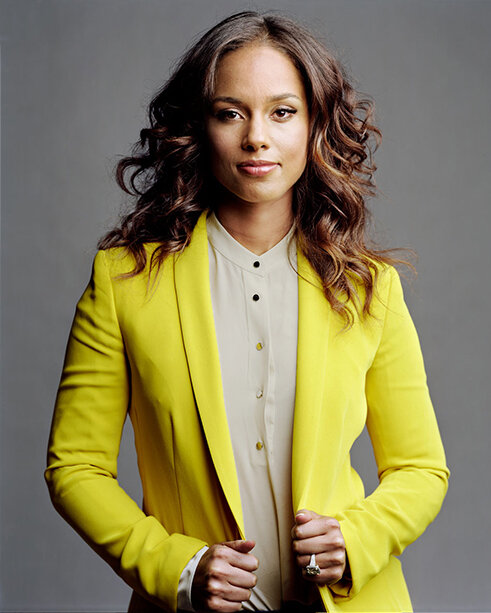Toni Morrison: The Pieces I Am
This artful film began as a dream—unknowingly, in the sacred space where readers and writers gather.
After reading Morrison’s entire body of work in chronological order for pleasure on my free time during a very lonely time in my life–eleven novels, three non-fiction tomes, including the classics, The Black Book and Playing in the Dark: On Whiteness and the Literary Imagination, I wanted to see a documentary film about the Nobel Laureate whose work eased my discomfort and lit my imagination. When I searched the American Masters roster in 2015 for a documentary on Morrison and realized there was none, I was horrified and enraged by the erasure. In fact, I expected to see several films about the only American living novelist to have won the world’s top literary prize. Inspired by Morrison’s famous charge, “if there is a book you want to read and but hasn’t been written yet, then you must write it,” I was moved to want to make a film about her life. I approached director and photographer Timothy Greenfield-Sanders, with whom I was working on another film The Women’s List and also was the only person I knew who had a direct line to Morrison, The Pieces I am was made. The film was made because Morrison was ready and the stars were aligned. Seems she wanted a film as much as I did.
We did something together—interviewer and subject—Toni and I.
Interviewing the literary giant was one of the most terrifying and enthralling experiences of my career. Being with Morrison at her magical boathouse where a ghost named Beloved visited was a transformative experience. Her steely intellect, wit, and generous heart was captured on film. Helping unpack Morrison’s art were Oprah Winfrey, Angela Y. Davis, Fran Lebowitz, Sonia Sanchez, New Yorker critic, Hilton Als, and Morrison’s legendary editor, Robert Gottlieb and others.
Morrison was a writer, editor, teacher, and mother. Once you begin reading Morrison, you are pulled into a powerful vortex—her work and the work of those she championed. While at Random House she ensured that many of the voices of the Civil Rights and Black Power Movement were chronicled by editing and championing their work. Gayle Jones, Toni Cade Bambara, Angela Davis, Muhammad Ali, and Huey Newton were among these voices. Morrison is the entry point into a larger universe of Black stories, which is deep and wide, ancient, and oh, so beautiful.
My hope is for this film to connect her more intimately with readers of her work as well as new readers. To inspire everyone to return or encounter for the first Morrison’s timeless classics—her novels, essays, sobering speeches, and meditations. To be lifted and inspired— and to be freed. The film made its debut at Sundance, and aired nationally on PBS, Netflix and HULU.
At the end of the big read and the film, I learned that you don’t read Morrison for pleasure only, you read Morrison ultimately, for liberation.
The Boomer List
I share interview credits in The Boomer List which originally aired on PBS for American Masters. Boomer tells the story of the trailblazing generation told through one iconic baby boomer a year — from 1956 to 1964. The film features Billy Joel, Eve Ensler, Deepak Chopra, Amy Tan, (pictured right) Samuel L. Jackson, Tommy Hilfiger, John Leguizamo, and others.
The pleasure of exploring origin stories within the context of the wild and legendary generation was lots of fun. After all, this was the generation that tripped on LSD, ushered in the contraceptive pill and the sexual revolution, were part of the Civil Rights Movement, Women’s Movement, Stonewall, created laptops and smart phones, sported bell bottoms, and jammed at Woodstock.
The American Masters doc originally aired on PBS and is currently streaming on Netflix.
The Latino List, Volumes I
I share interview credits on The Latino List, Volumes I & II. As with other List films, the larger story of a community is told through the prism of individual portraits. Among those featured in the films are trailblazing newsmakers, Justice of the Supreme Court Sonia Sotomayor and Eva Longoria, America Ferrara, Chi Chi Rodriguez, Christy Turlington and Pitbull (pictured here,) among others.
The films originally aired on HBO and are now streaming on Netflix.
There are three additional List films also directed by Greenfield-Sanders and produced by the same team with different interviewers.
The List films—as all my work — highlights the power of reframing narratives and help destroy walls that have been imposed on marginalized people–the ones who have been othered. It is to realize that we are the center.
The Latino List Volume 2
Meet 15 women who define contemporary American culture in Timothy Greenfield-Sanders’ new “List” film featuring Madeleine Albright, Margaret Cho, Edie Falco, Betsey Johnson, Alicia Keys, Nancy Pelosi, Rosie Perez, Wendy Williams and more. All trailblazers in their fields, these women share their experiences struggling against discrimination and overcoming challenges to make their voices heard.
The Women’s List
The Women's List is part of a series of intimate films exploring race, identity, gender and sexuality in America directed by Timothy Greenfield Sanders. I was the interviewer on the project. It features fifteen women who share intimate stories of their lives, struggles, triumphs, and joys. Featuring interviews with Nancy Pelosi, Shonda Rhimes, Edie Falco, Margaret Cho, Wendy Williams, Madeleine Albright, Rosie Perez, Betsey Johnson, Alicia Keys and others.




